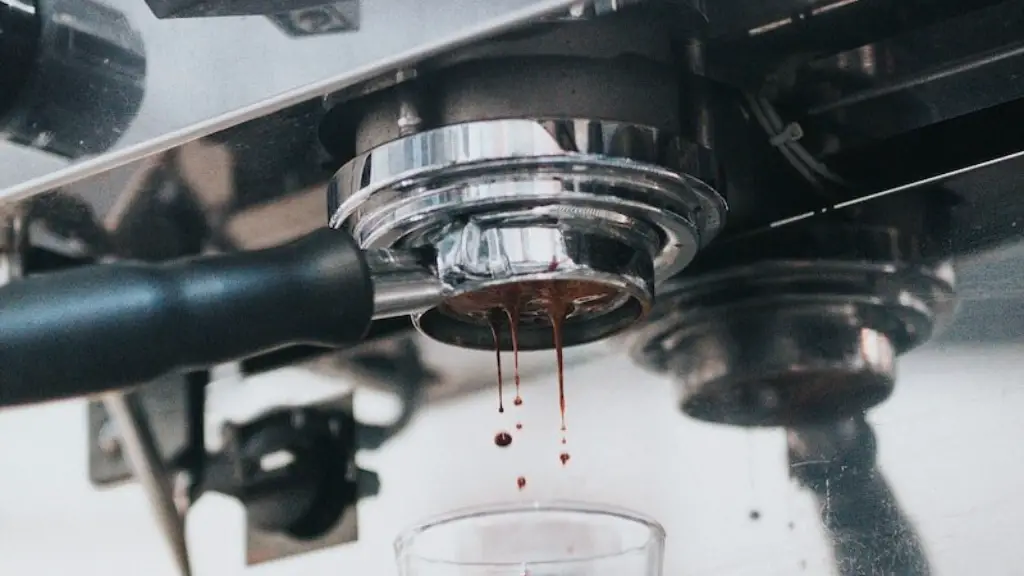Coffee Consumption
Coffee is enjoyed by millions of people around the world for its unique flavor and energy-boosting properties. In fact, coffee is the second most consumed beverage in the world after water, with an estimated 2.25 billion cups of coffee consumed each day. Despite its popularity, many coffee drinkers worry about the potential risks of coffee consumption; one of the primary concerns is that regular coffee drinking can lead to staining of teeth.
Causes of Coffee Stains
The staining of teeth caused by coffee drinking is due to the presence of chromogens and tannins in coffee. Chromogens are natural pigments found in many beverages that can attach to the teeth. Tannins are naturally occurring compounds that are found in many plant-based foods and drinks, including coffee beans. When combined with saliva, the chromogens and tannins form a sticky film that attaches to teeth and gums, leaving behind yellowish-brown stains.
Does Drinking Coffee Through a Straw Stop Staining?
There is debate about whether drinking coffee through a straw can help prevent staining of teeth. Some experts argue that drinking coffee through a straw does reduce the amount of chromogens and tannins that come into contact with teeth, as the majority of the beverage bypasses the mouth and goes straight down the throat.
Others argue that the staining of teeth caused by coffee is due to repeated exposure over time, and drinking through a straw is not likely to make much of a difference. Even if the straw diverts some of the beverage away from the mouth, regular and repeated consumption of coffee would inevitably result in some amount of staining.
Alternatives for Preventing Coffee Staining
For those concerned about staining of teeth, there are some alternative approaches that can help reduce the amount of staining caused by coffee consumption. One of the best alternatives is to mix the coffee with milk or cream, as this helps to neutralize the staining effects of the tannins. Additionally, drinking coffee through a paper straw, such as a bamboo straw, will further reduce the amount of chromogens and tannins that come into direct contact with teeth.
Rinsing With Water
Rinsing the mouth with water after drinking coffee is another effective way to reduce the staining effects of coffee. With this approach, the water helps to break down the chromogen and tannin-containing film that sticks to the teeth and gums, removing it before it has the chance to cause staining. Additionally, rinsing can help to dislodge and remove any chromogen or tannin particles that may have been left behind in the mouth.
Brushing and Flossing
Regular brushing and flossing can also help to reduce the staining effects of coffee. The bristles on toothbrushes are designed to remove plaque and debris from the surface of teeth, which can help to prevent staining of teeth. Additionally, flossing is important for removing particles of food and drink from between teeth and gums, reducing the amount of chromogens and tannins present in the mouth.
Change of Diet and Habits
Many experts also advise changing dietary and lifestyle habits in order to reduce staining of teeth due to coffee consumption. Adjusting the diet to include more fruits and vegetables can help to reduce the staining effects of coffee, as these foods are thought to be less likely to cause staining. Additionally, limiting the amount of coffee consumed can reduce the amount of staining caused by coffee.
Using Whitening Toothpastes and Strips
For those who already have teeth stained by coffee, whitening toothpastes and strips can be used to reduce the appearance of stains. Whitening toothpastes contain a variety of active ingredients that help to break down stains on teeth, reducing their appearance. Additionally, whitening strips help to break down stains on teeth, restoring the teeth to their natural color.
Coffee and Dental Health
It is important to note that coffee consumption is not all bad for dental health. In fact, recent studies have suggested that drinking coffee can actually help to protect the teeth from cavities and other dental issues. Coffee consumption can also help to reduce the risk of gum disease, as recent research has suggested that it may have anti-inflammatory properties.
Conclusion
Overall, drinking coffee through a straw is unlikely to reduce the staining effects of coffee, as repeated and regular consumption would eventually result in some amount of staining. However, there are other alternatives that can be used to reduce the staining effects of coffee, such as drinking coffee with milk or cream, rinsing the mouth with water, brushing and flossing, changing dietary and lifestyle habits, and using whitening toothpastes and strips. Additionally, regular coffee consumption is unlikely to lead to significant dental health complications, and may actually help to protect the teeth from cavities and other issues.


